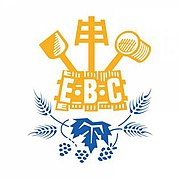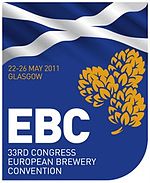
Beer is one of the oldest and most widely consumed alcoholic drinks in the world, and the third most popular drink overall after water and tea. It is produced by the brewing and fermentation of starches, mainly derived from cereal grains—most commonly from malted barley, though wheat, maize (corn), rice, and oats are also used. During the brewing process, fermentation of the starch sugars in the wort produces ethanol and carbonation in the resulting beer. Most modern beer is brewed with hops, which add bitterness and other flavours and act as a natural preservative and stabilizing agent. Other flavouring agents such as gruit, herbs, or fruits may be included or used instead of hops. In commercial brewing, the natural carbonation effect is often removed during processing and replaced with forced carbonation.

Brewing is the production of beer by steeping a starch source in water and fermenting the resulting sweet liquid with yeast. It may be done in a brewery by a commercial brewer, at home by a homebrewer, or communally. Brewing has taken place since around the 6th millennium BC, and archaeological evidence suggests that emerging civilizations, including ancient Egypt and Mesopotamia, brewed beer. Since the nineteenth century the brewing industry has been part of most western economies.
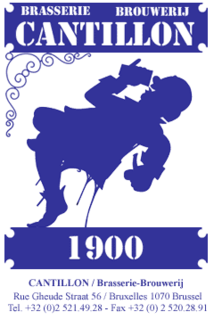
Brasserie-Brouwerij Cantillon is a small Belgian traditional family brewery based in Anderlecht, Brussels. Cantillon was founded in 1900 and brews exclusively lambic beers.

Beer in Belgium varies from pale lager to amber ales, lambic beers, Flemish red ales, sour brown ales, strong ales and stouts. In 2018, there were approximately 304 active breweries in Belgium, including international companies, such as AB InBev, and traditional breweries including Trappist monasteries. On average, Belgians drink 68 liters of beer each year, down from around 200 each year in 1900. Most beers are bought or served in bottles, rather than cans, and almost every beer has its own branded, sometimes uniquely shaped, glass. In 2016, UNESCO inscribed Belgian beer culture on their list of the intangible cultural heritage of humanity.

Allagash Brewing Company is a brewery in Portland, Maine. The brewery specializes in Belgian style beers.
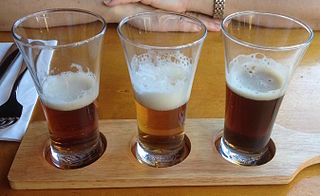
Beer styles differentiate and categorise beers by colour, flavour, strength, ingredients, production method, recipe, history, or origin.

Beer is one of the oldest drinks humans have produced. The first chemically confirmed barley beer dates back to the 5th millennium BC in modern-day Iran, and was recorded in the written history of ancient Egypt and Mesopotamia and spread throughout the world.
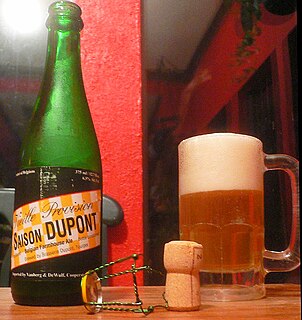
Saison is a pale ale that is highly carbonated, fruity, spicy, and often bottle conditioned. It was historically brewed with low alcohol levels, but modern productions of the style have moderate to high levels of alcohol. Along with several other varieties, it is generally classified as a farmhouse ale.
Gluten-free beer is beer made from ingredients that do not contain gluten such as millet, rice, sorghum, buckwheat or corn (maize). People who have gluten intolerance have a reaction to certain proteins in the grains commonly used to make beer, barley and wheat. The hordein found in barley and the gliadin found in wheat are types of gluten that can trigger symptoms in sufferers of these diseases. Gluten-free beer is part of a gluten-free diet.

Mash ingredients, mash bill, mashbill, or grain bill are the materials that brewers use to produce the wort that they then ferment into alcohol. Mashing is the act of creating and extracting fermentable and non-fermentable sugars and flavor components from grain by steeping it in hot water, and then letting it rest at specific temperature ranges to activate naturally occurring enzymes in the grain that convert starches to sugars. The sugars separate from the mash ingredients, and then yeast in the brewing process converts them to alcohol and other fermentation products.
Dupont Brewery is a brewery in Tourpes (Leuze-en-Hainaut), in western Hainaut, Belgium. Founded in 1950, it is on a working farm which dates back to 1759 and has significant brewing history. In the 1990s, a bread bakery and cheese-making facility were added.

Lager is beer which has been brewed and conditioned at low temperature. Lagers can be pale, amber, or dark. Pale lager is the most widely consumed and commercially available style of beer. The term "lager" comes from the German for "storage", as the beer was stored before drinking – traditionally in the same cool caves it was fermented in.
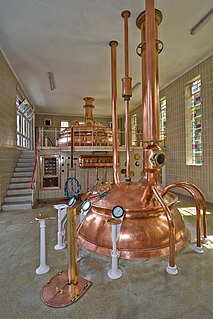
A brewery or brewing company is a business that makes and sells beer. The place at which beer is commercially made is either called a brewery or a beerhouse, where distinct sets of brewing equipment are called plant. The commercial brewing of beer has taken place since at least 2500 BC; in ancient Mesopotamia, brewers derived social sanction and divine protection from the goddess Ninkasi. Brewing was initially a cottage industry, with production taking place at home; by the ninth century, monasteries and farms would produce beer on a larger scale, selling the excess; and by the eleventh and twelfth centuries larger, dedicated breweries with eight to ten workers were being built.
Beer is produced through steeping a sugar source in water and then fermenting with yeast. Brewing has taken place since around the 6th millennium BC, and archeological evidence suggests that this technique was used in ancient Egypt. Descriptions of various beer recipes can be found in Sumerian writings, some of the oldest known writing of any sort. Brewing is done in a brewery by a brewer, and the brewing industry is part of most western economies. In 19th century Britain, technological discoveries and improvements such as Burtonisation and the Burton Union system significantly changed beer brewing.
When drinking beer, there are many factors to be considered. Principal among them are bitterness, the variety of flavours present in the beverage and their intensity, alcohol content, and colour. Standards for those characteristics allow a more objective and uniform determination to be made on the overall qualities of any beer.

Most beer sold in France is pilsner lager, mass-produced by major breweries which control over 90% of the market, although there are also traditional beer styles, such as top-fermented Bière de Garde, and a number of microbreweries.

Mützig is a beer brand owned by Heineken and its subsidiaries, and was originally brewed in 1810 by Brasserie Mutzig of Alsace, France. It is now a 5.5% ABV lager available in 65cl and 33cl bottles. It has a full-bodied taste and distinctive packaging, and is the most successful premium, locally brewed beer in Central Africa. Mützig is considered a flagship African brand.

Porter is a style of beer that was developed in London, England in the early 18th century. It was well-hopped and dark in appearance owing to the use of brown malt. The name originated from its popularity with street and river porters.
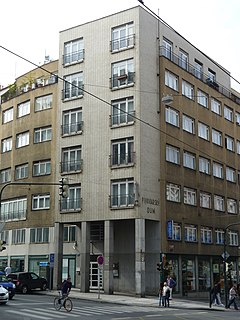
The Research Institute of Brewing and Malting (RIBM) in Czech - was founded in 1887 and since 1994 It has been a joint-stock company. It is one of the oldest scientific research institutes in the Central European region.

Gabriela Basařová was a Czech professor of chemistry, working in the field of fermentation chemistry, brewing, and malting. Most of her scientific and research work was devoted to the study of non-biological, so-called colloidal, turbidity of beer and methods of delaying its production during storage. She participated in scientific, educational and publishing activities in the Czech Republic and abroad, and published 538 items, mostly in foreign journals. In 2012, Basarova was awarded the State Medal of Merit.
Most of the information used in the compilation of this article is derived from the internal archives of EBC which are housed at The Brewers of Europe. The information is not in the public domain and, for the most part, does not exist in electronic format. For more information, reference should be made to the EBC website. The EBC can be contacted via this website; also with respect to researchers seeking to research the EBC's archives.
